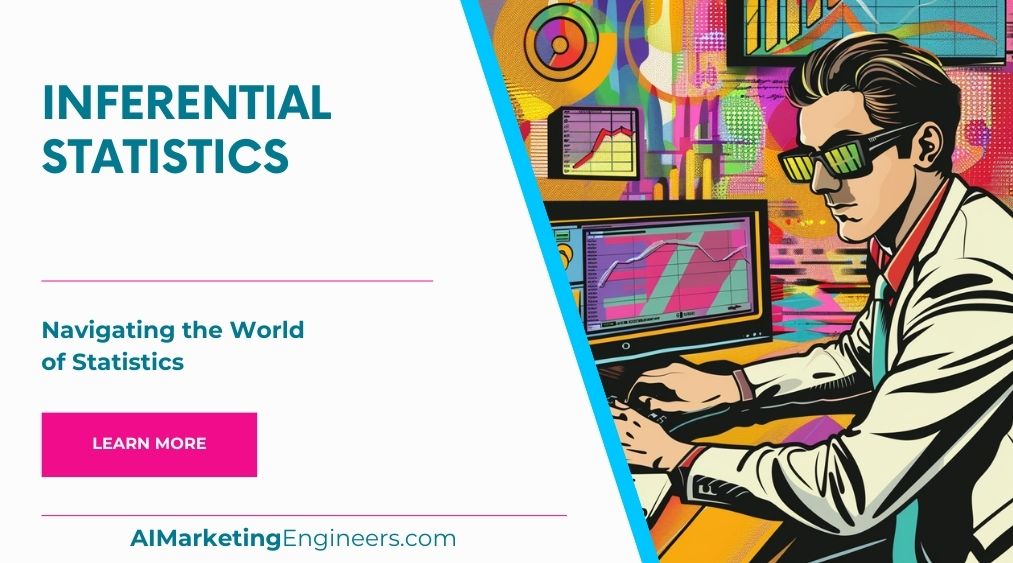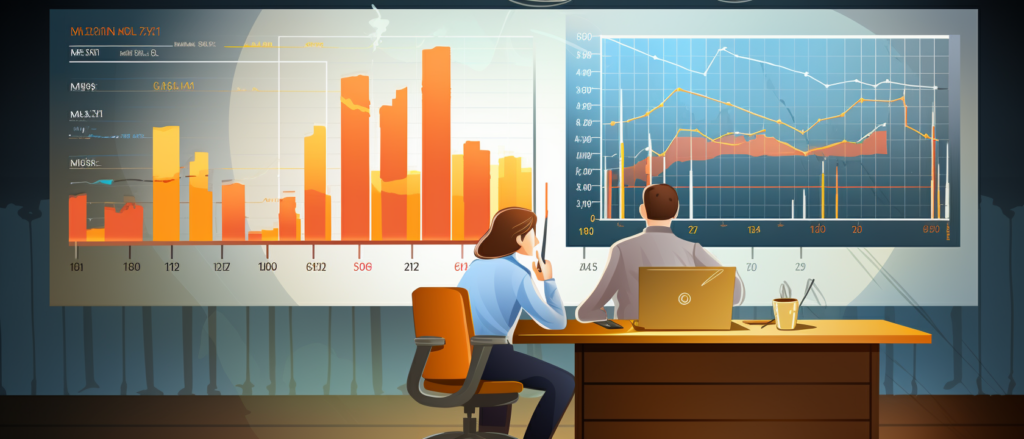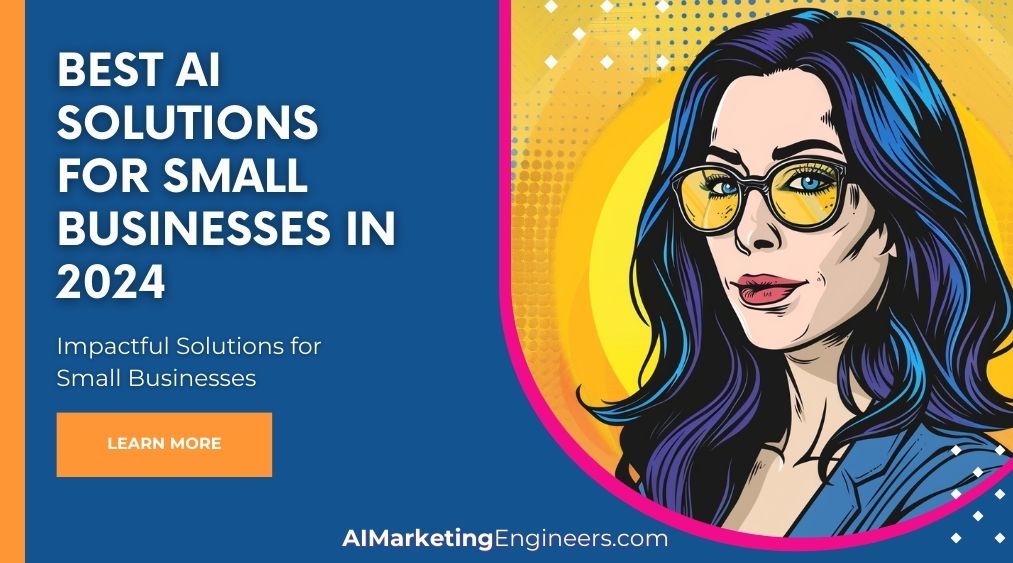Key Takeaways
✅ The essence of inferential statistics is its ability to make accurate predictions and insightful decisions based on a sample, reflecting a broader population.
✅ Impeccable hypothesis testing is the backbone of research, setting the foundation for validating claims through systematic statistical examination.
✅ Navigating through confidence intervals and significance levels determines the relevancy of research findings, ensuring robust and credible results.

Introduction
Imagine harnessing the power to predict trends, inform strategic decisions, and truly understand the signals hidden within your data. Inferential statistics is the cornerstone allowing businesses and researchers alike to transcend simple observations and delve into the predictive realm. By mastering this powerful tool, you’re not just analyzing data; you’re crafting the future.
Armed with techniques from hypothesis testing to sampling methods, you stand at the cusp of unlocking unprecedented insights. This comprehensive guide will chart a course through the nuanced landscape of inferential statistics, showcasing not just theories but actual applications that catalyze business growth and elevate research methodologies.
You will emerge not only equipped with the knowledge to interpret complex datasets but also inspired to implement innovative strategies that drive your revenue, ROAS, and ROI to new heights. Prepare to embark on a journey that promises to imbue your decision-making process with clarity and foresight. Stay with us as we unravel actionable insights and groundbreaking information to transform your use of inferential statistics into a competitive edge in today’s data-driven landscape.
Top Statistics
| Statistic | Insight |
|---|---|
| Global Statistical Analysis Software Market Size (2021): Valued at $5.9 billion, with an expected CAGR of 8.6% from 2021-2030. (Source: Grand View Research) | This impressive market value and promising CAGR demonstrate a strong trajectory for growth in tools central to inferential statistics, indicative of a bright future ahead for companies in the field. |
| Popularity among Data Scientists: A survey showed 47% use Python and 30% use R for inferential statistics. (Source: Kaggle) | The substantial usage of Python and R among data scientists highlights the importance of these languages in data analysis and the potential for new tools to cater to this savvy demographic. |
| Academic Use: R language is most popular in introductory statistics courses with a 45% adoption rate. (Source: PLOS ONE) | As the leading tool for statistics education, R’s prevalence is a testament to its accessibility and efficacy—key drivers for its sustained importance in academic settings. |
| Growth in Online Courses: Enrollment for statistics-related courses on Coursera grew 6x from March to April 2020. (Source: Coursera) | This remarkable increase suggests a surge in interest and the necessity for knowledge in inferential statistics amidst global events like the pandemic—a prime opportunity for e-learning platforms. |
| User Demographic: 42% of statistical software users were aged between 25-34 years. (Source: Statista) | Recognizing the prime age group can shape marketing strategies and product designs to better suit the dominant user base’s preferences in statistical tools. |
Inferential Statistics
Inferential statistics is the powerhouse of data analysis, allowing researchers to make inferences about a larger population based on a sample. This analytical backbone differentiates itself from descriptive statistics by extending beyond mere data summarization to predictions and generalizations. In the cadre of e-commerce, it’s pivotal for decision-making and effective hypothesis testing, fueling strategic insights from consumer behavior to inventory forecasts.
Hypothesis Testing Basics
In the world of hypothesis testing, the null hypothesis and alternative hypothesis are the Yin and Yang. They propose contrasting statements about a population parameter, setting the stage for investigation. Comprehending Type I (false positive) and Type II (false negative) errors is crucial to risk assessment. The chosen significance level (α), often 0.05, and the p-value work together to decide the fate of hypotheses, guiding e-commerce players on ventures from marketing tweaks to product launches.
Sampling Methods and Sample Size Determination
To set sail in the right direction, selecting the optimal sample is non-negotiable. Probability sampling (encompassing simple random, stratified, cluster, systematic) ensures each member of the population has a known chance of selection, guarding against bias. In contrast, nonprobability sampling (like convenience, quota, and snowball methods) often serves practicality over perfection. The sample size is a balancing act, affected by the desired confidence level, margin of error, and population variability, critical in capturing the consumer pulse.
Common Statistical Tests for Inference
T-tests shine in comparing means, whether it’s gauging customer satisfaction between two products or evaluating pre- and post-campaign metrics. ANOVA ascends when multiple groups are in play, spotlighting differences across several marketing channels. The Chi-square test delves into categorical whirlpools, and not to be outdone, regression analysis forecasts trends and relationships, a navigator through the e-commerce storm, predicting sales trajectories and customer lifetime value.
Interpretation and Communicating Results
Once cradled in data, results demand articulation. Effect sizes give magnitude, confidence intervals offer range, and practical significance ties it back to real-world implications. Conveying findings with clarity through graphs and tables is the compass by which stakeholders navigate. Writing conclusions is an art—fusing the study’s strength with a candid reflection of its boundaries stirs confidence and drives informed action.
Limitations and Misinterpretations of Inferential Statistics
Even with meticulous planning, the ghost of bias and unseen confounding factors can haunt data. An overreliance on statistical significance may mask the broader narrative, and misuse of p-values can steer a study into the abyss of non-replicability. Awareness of these pitfalls, especially in dynamic e-commerce environments, solidifies a stronger, more authentic grasp of statistical landscapes.
Inspirational Quotes
1. “Inference is not deduction; it’s induction. It’s reaching conclusions about populations based on samples.” – John Tukey
John Tukey, a titan in the field of statistics, eloquently differentiates the subtleties between inferential and deductive reasoning. Through this powerful insight, he empowers us to understand that the essence of inferential statistics is its capacity to inform us about the greater whole from just a fragment of its entirety. Emulating Tukey’s approach in e-commerce, we learn to make strategic decisions by extrapolating from the data we collect, whether it be consumer behavior patterns, market trends, or the performance of our latest marketing campaign.
2. “Statistics can be made to prove anything – even the truth!” – Mark Twain
Mark Twain, with his customary wit, delivers a poignant remark on the malleability of statistics. For e-commerce professionals, this quote isn’t just amusing—it’s a clarion call for ethical data practice. In a digital marketplace flooded with information, ensuring the genuine interpretation of data is paramount. Twain’s words invite brands to foster a culture of integrity, where statistical insights are leveraged to enhance transparency and build trust with customers.
3. “The goal of modern data analysis is prediction and inference, not just description.” – William Cleveland
William Cleveland, a pioneer in data visualization, propels us to look beyond the present. For burgeoning e-commerce ventures, this message heralds a shift towards anticipatory analytics. Instead of merely summarizing past performances, predictive analytics open the gateway to foresight—anticipating customer needs, responding to market changes in real-time, and innovating for future trends. Cleveland’s philosophy encourages us to harness the predictive power of data to not just survive but thrive in the dynamic e-commerce landscape.
AI Marketing Engineers Recommendation
Recommendation 1: Utilize A/B Testing Vigorously: In this digital age, micro-moments define consumer behavior. Inferential statistics empower e-commerce players to derive conclusions about these behaviors at scale. Leverage A/B testing to compare different versions of webpages, emails, or products with precision. Statistics show that companies using A/B testing regularly can see improved conversion rates by up to 30%. Using inferential statistics, you can confidently determine which variant performs better and make data-driven decisions that bolster your marketing conversions.
Recommendation 2: Embrace Predictive Analytics for Personalization: As experts, we know that personalization can lift sales by 10% or more. With the inference-driven approach of predictive analytics, you understand not just the ‘what,’ but the ‘why’ behind customer actions. By analyzing historical and real-time data, inferential statistics predict future customer behavior with increased accuracy. Stay ahead by integrating these predictions into your marketing strategy, customizing experiences that resonate on an individual level, and watch your engagement soar.
Recommendation 3: Implement Machine Learning for Enhanced Customer Insights: Tools underpinned by Machine Learning algorithms are a game-changer. They analyze vast datasets to glean customer insights beyond the surface. Platforms like Google Analytics leverage inferential statistics for predictive modeling, offering insights into customer acquisition, behavior, and conversion. With these tools, businesses not only understand what customers might do next but also why, empowering them with knowledge to preemptively address upcoming trends and customer needs.
Conclusion
As we close the chapter on Unlocking Insights through Inferential Statistics, it’s evident that our quest for deeper understanding and data-driven decision-making is greatly empowered by these analytical methodologies. Inferential statistics, far from being a mere academic exercise, holds the key to distilling actionable insights from our vast seas of data. By mastering hypothesis testing, recognizing the nuances of sampling methods, and applying robust statistical tests, we embark on a journey that elevates our research to new levels of precision and reliability.
A strong grasp of inferential statistical techniques unfolds a map to navigate the complexities of market trends and consumer behaviors, allowing e-commerce entrepreneurs to fine-tune their strategies with confidence. Integrating effect sizes, confidence intervals, and other measures into our presentations refines our narrative, making the intangible metrics tangible and the abstract findings impactful.
Remember, though, that statistics are but one piece of a larger puzzle. Critical thinking and ethical consideration are essential companions safeguarding against misinterpretation and misuse of statistical power. While vigilantly avoiding these pitfalls, we must continue to innovate, utilizing advanced statistical tools and software that are reshaping our analytical landscapes.
So, whether you’re at the beginning of your inferential statistics journey or well on the path of advanced analysis, this is a call to action—a rally to embrace statistical literacy as a cornerstone of your e-commerce strategy. Let this guide be a springboard into future explorations and a beacon for the relentless pursuit of knowledge. By leveraging the dual forces of cutting-edge innovation and timeless statistical principles, the future of e-commerce success is limitless.
FAQs
Question 1: What is inferential statistics?
Answer: Inferential statistics involves using sample data to make predictions or draw conclusions about a larger population. It helps us understand relationships between variables and make informed decisions in situations where we cannot study every member of the population.
Question 2: How does inferential statistics differ from descriptive statistics?
Answer: Descriptive statistics summarizes and describes characteristics of a dataset (e.g., mean, median), while inferential statistics uses this information to make generalizations beyond the dataset itself.
Question 3: What are some common types of inferential statistical tests?
Answer: Some popular inferential statistical tests include t-tests, ANOVA, chi-square test, regression analysis, and correlation analysis. These methods help determine if there are significant differences or relationships among groups or variables.
Question 4: When should I use parametric vs. nonparametric tests?
Answer: Parametric tests assume certain conditions about the distribution of your data (e.g., normality). Nonparametric tests do not require these assumptions but may be less powerful. Use parametric tests when your data meets the necessary requirements; otherwise, opt for nonparametric alternatives.
Question 5: How do I choose an appropriate sample size for my research project?
Answer: Sample size depends on factors like desired precision, population size, and expected effect size. There isn’t one universal rule, so consider consulting resources such as power analysis calculators or seeking guidance from experts in your field.
Question 6: Can you explain hypothesis testing in simple terms?
Answer: Hypothesis testing involves formulating two competing hypotheses (null and alternative) about a population parameter. You collect data from a sample, perform statistical calculations, and decide whether to reject the null hypothesis in favor of the alternative based on predefined criteria (p-value, confidence interval).
Question 7: What is the difference between Type I and Type II errors in hypothesis testing?
Answer: Type I error occurs when you incorrectly reject a true null hypothesis, while Type II error happens when you fail to reject a false null hypothesis. Both errors can have consequences, so it’s essential to balance their risks depending on the context of your research question.
Question 8: Why is significance level important in inferential statistics?
Answer: The significance level (usually set at 0.05) determines how likely you are willing to accept a Type I error. Lower significance levels indicate greater evidence against the null hypothesis, making it more challenging to find statistically significant results.
Question 9: How can I visualize and communicate inferential statistical results effectively?
Answer: Visualization tools like bar charts, boxplots, scatter plots, and histograms can help convey complex statistical findings. Additionally, ensure your reports clearly state the research question, methodology, results, and implications in plain language.
Question 10: Are there any ethical considerations related to inferential statistics?
Answer: Yes! Ensure your sampling techniques are unbiased, protect participants’ privacy by anonymizing data, and report all findings honestly without cherry-picking or misrepresenting results.
Academic References
- Christensen, R. A. (2019). Introduction to statistical methods (8th ed.). Wiley. This textbook is a valuable resource offering a comprehensive introduction to fundamental concepts and practical applications of inferential statistics, including hypothesis testing, confidence intervals, and various statistical tests.
- Kutner, M. H., Nachtsheim, C. J., Neter, J., & Li, W. (2004). Applied linear regression models (4th ed.). McGraw Hill Professional. An in-depth exploration of linear regression models, discussing a variety of types, assumptions, diagnostics, and model selection techniques, essential for predicting future trends or investigating relationships between variables.
- Karr, A. F. (2015). The essentials of multivariate data analysis (3rd ed.). Springer Science+Business Media. This work provides practical guidance on advanced multivariate techniques such as principal component analysis, factor analysis, discriminant analysis, and cluster analysis, facilitating their implementation in tackling real-life complex datasets.
- Cohen, J. (1992). Statistical power analysis for the behavioral sciences (2nd ed.). Routledge Academic. Cohen’s seminal work introduces power analysis, aiding researchers in determining the necessary sample size for adequate statistical power and minimizing statistical errors, fundamental for designing robust statistical studies.













